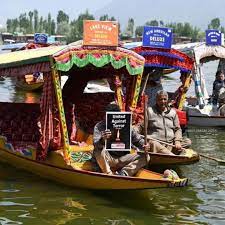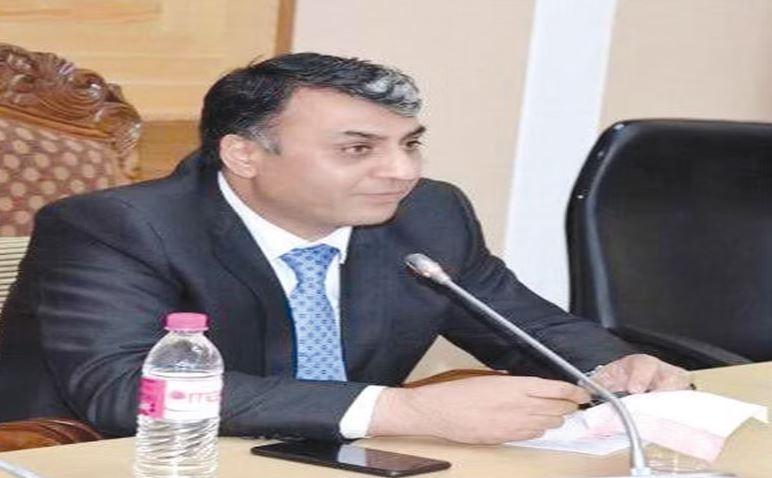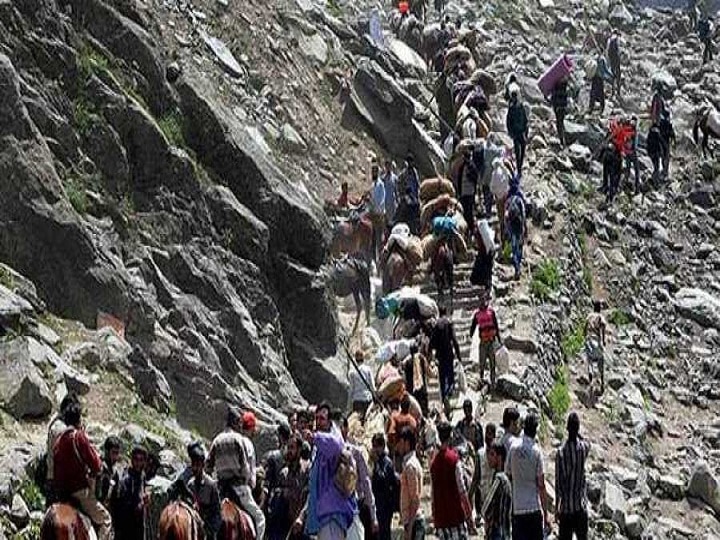Kashmir’s Eternal Allure Faces Another Test
By: Javid Amin
Srinagar 26 April 2025: Kashmir, often called “Paradise on Earth,” is no stranger to turmoil. Over decades, the Valley has faced political unrest, natural disasters, and violence — and yet, every time, it rises again, resilient and hopeful.
The recent tragic terror attack in Pahalgam, which claimed 26 innocent lives, tested that spirit once more. For a moment, it seemed the healing process would be shattered.
But now, just days after the attack, an extraordinary story of resilience is unfolding: tourists are returning to Srinagar, determined to experience the Valley’s unmatched beauty and hospitality.
In this in-depth feature, we explore the ground reality of Kashmir post-Pahalgam tragedy — the cautious return of travelers, the emotional resilience of locals, and the slow but determined road to recovery.
The Pahalgam Tragedy – A Heartbreaking Blow to Kashmir’s Soul
The Attack That Shook the Valley
On what should have been a peaceful summer evening in Pahalgam — one of Kashmir’s most popular tourist destinations — militants unleashed terror, killing 26 people in a brutal ambush.
Families enjoying vacations, vendors selling souvenirs, young guides escorting trekkers — all became victims of senseless violence.
The serene landscapes of Baisaran meadows were stained with grief. Shock waves reverberated not just through Kashmir, but across India and around the world.
The Immediate Aftermath — Fear, Grief, and a Standstill
Tourism Grinds to a Halt
Following the attack, bookings plummeted. Hotels reported massive cancellations. Airlines offering flights to Srinagar saw a 60% drop in passenger traffic within 48 hours.
The idyllic town of Pahalgam, usually bustling with laughter, camera clicks, and the aroma of street food, turned into a silent, heavily guarded zone.
Checkpoints sprang up overnight. Military vehicles patrolled every street. Access to key tourist spots like Baisaran, Aru Valley, and Betaab Valley was restricted.
Locals mourned not only the loss of life but also the collapse of the season they had been counting on — the short but critical summer tourism window.
Srinagar’s Resilient Heartbeat — Hope Restored on Dal Lake
Dal Lake: A Symbol of Enduring Beauty and Hope
While Pahalgam struggled with grief, Srinagar — Kashmir’s vibrant capital — offered a glimmer of hope.
Just days after the tragedy, tourists could once again be seen boarding colorful shikaras on the glittering waters of Dal Lake.
Vendors sold fresh lotus blooms. Houseboats resumed hosting curious travelers. The legendary Mughal gardens — Nishat, Shalimar, Chashme Shahi — reopened their gates to visitors.
Srinagar had chosen resilience over fear.
“Kashmir is hurting, but Kashmir is also healing,” said Abdul Hameed, a third-generation houseboat owner.
“And in our healing, we welcome every guest with even more love.“
Voices of Courage — Stories from Tourists on the Ground
Why Travelers Are Refusing to Cancel Their Kashmir Dreams
In a remarkable show of solidarity and love for Kashmir, several tourists decided to proceed with their travel plans despite security concerns.
Many described the experience as emotional but uplifting.
Real Voices from Real Visitors
-
Vikram Bhai Vyas (Gujarat):
“The hospitality here has been incredible. We felt no fear. Locals have been so welcoming. Kashmir is as beautiful as ever.“
-
Vaibhavi Vyas (Mumbai):
“We noticed increased security, but it actually made us feel safer. This trip has been unforgettable, in the best way.“
-
Daniela Schmitt (Germany):
“I came to see the beauty of Kashmir, and I found beauty in its people too. Their resilience touched my heart.“
The Local Economy — Fighting for Survival and Recovery
Tourism: The Lifeline of Kashmir
Tourism directly employs over 30% of Kashmir’s working population — from hoteliers, taxi drivers, tour guides, and artisans to food vendors and pony handlers.
An average tourist season can generate ₹2,500 crores (~$300 million USD) for the region’s economy.
When fear strikes, the financial devastation is immediate and widespread.
Local Businesses Innovate for Survival
Recognizing the urgent need to revive confidence, locals are taking proactive steps:
-
Offering heavy discounts on hotels and houseboats
-
Launching “Welcome Back” packages including free tours and souvenirs
-
Hosting local music nights and cultural events to attract domestic tourists
-
Strengthening collaborations with travel agencies to offer “safe corridor tours”
Enhanced Security Measures — Winning Back Trust
Visible, Strategic, and Tourist-Focused
Security forces have worked swiftly to ensure safety while maintaining a welcoming atmosphere.
New measures include:
-
Increased deployment of tourist police in Srinagar, Gulmarg, Sonamarg, and Pahalgam
-
Advanced surveillance systems and drone monitoring
-
Secure travel corridors and verified transportation partners
-
Regular safety briefings for travelers
“Security is tighter, but it’s respectful. You can move freely and safely,” said Prakash Sinha, a recent visitor from Kolkata.
Healing Together — Community Initiatives to Rebuild Confidence
From Grief to Action
Kashmiris know that true healing requires more than words.
Local NGOs, youth groups, and tourism boards are working hand in hand to:
-
Organize solidarity walks through the streets of Srinagar
-
Launch #WeStandWithKashmir social media campaigns
-
Host free shikara rides and community feasts for tourists
-
Encourage visitors to post positive stories from their Kashmir trips
The Role of the Media — A Call for Responsible Reporting
Sensationalism vs. Ground Reality
Unfortunately, some media outlets amplified panic instead of reporting nuanced realities.
Local leaders and tourism experts are urging the national and international media to:
-
Highlight resilience and recovery efforts
-
Promote verified safety updates
-
Avoid painting all of Kashmir with a broad brush of fear
“We need the world to see our hope, not just our pain,” emphasized a young hotelier in Srinagar.
Why Kashmir Needs You Now More Than Ever
Travel as a Form of Solidarity
Visiting Kashmir today is more than just a holiday.
It’s a way to support a community fighting for normalcy, dignity, and survival.
Every meal at a local restaurant, every stay at a family-run houseboat, every ride with a local guide — injects hope and livelihood back into the Valley.
Bottom-Line: A Valley That Refuses to Break
Kashmir’s resilience is more than poetic — it’s real, living, and breathing.
Despite yet another painful chapter written by violence, the Valley’s spirit shines undimmed.
As travelers return to Srinagar, Gulmarg, and even to the fringes of Pahalgam, they carry not only suitcases but solidarity.
Kashmir welcomes you with open arms — with beauty, with hospitality, and above all, with hope.
The shikaras glide again on Dal Lake.
The meadows sway once more in the mountain breeze.
And the people of Kashmir, battered but unbeaten, smile once again.
Come, be part of Kashmir’s healing story.



